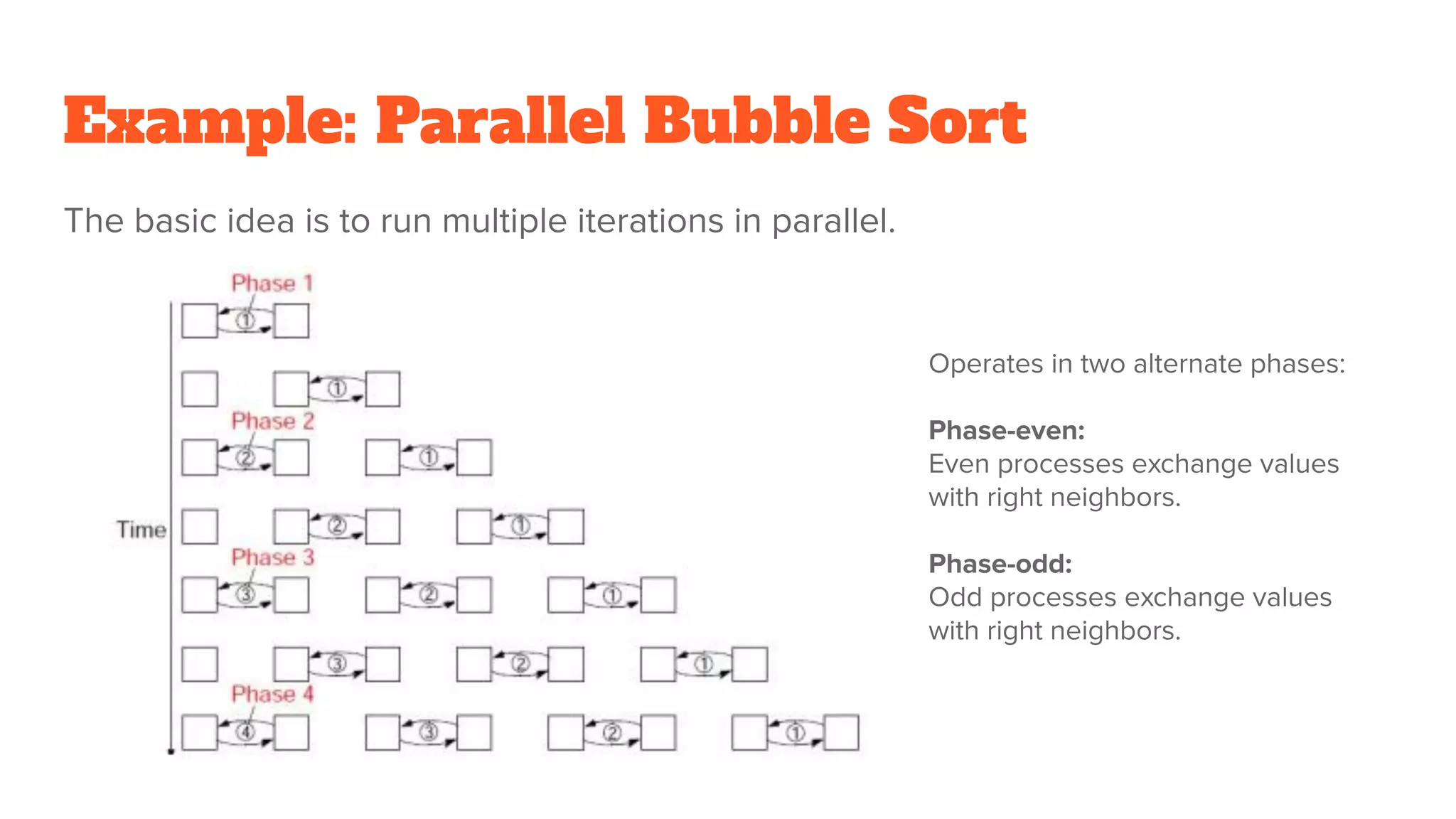The document discusses sequential and parallel searching algorithms, highlighting the advantages of parallel search in enhancing speed through multi-threading. It outlines the time complexities of sequential search (O(n)) and parallel search (O(log(n+1)/log(p+1))), with examples like bubble sort to illustrate sequential and parallel processes. It also mentions the importance of scalability and speedup as performance indicators for parallel algorithms.


![Sequential Search Algorithms
The search starts at the first record and
moves through each record until a match is
made, or not made.
Time complexity: O(n), ie. grows linearly as
the no. of items increases
int arraySize = arr.length;
for(int i = 0; i < arraySize; i++) {
if(arr[i] == key) {
return i;
}
}
return -1;](https://image.slidesharecdn.com/sequentialandparallelsearchingalgorithms-210513211757/75/Sequential-and-Parallel-Searching-Algorithms-3-2048.jpg)



![Sequential Parallel Search Algorithm
Input:- An unsorted array S and
the search element y
Output:- The position of y
The unsorted array is first decomposed into
n/p subarrays.
Complexity: O(log(n+1)/log(p+1))
for k = 0 to n-2
if k is even then
for i = 0 to (n/2)-1 do in parallel
If A[2i] > A[2i+1] then
Exchange A[2i] ↔ A[2i+1]
else
for i = 0 to (n/2)-2 do in parallel
If A[2i+1] > A[2i+2] then
Exchange A[2i+1] ↔ A[2i+2]](https://image.slidesharecdn.com/sequentialandparallelsearchingalgorithms-210513211757/75/Sequential-and-Parallel-Searching-Algorithms-7-2048.jpg)

![References
● http://nptel.ac.in/courses/106106112/Module5/Lecture%202/Lecture%202.pdf
[Searching on a random sequence in parallel]
● https://researchgate.net/publication/267739792_High_Performance_Pattern_
Matching_on_Heterogeneous_Platform [High Performance Pattern Matching on
Heterogeneous Platform]](https://image.slidesharecdn.com/sequentialandparallelsearchingalgorithms-210513211757/75/Sequential-and-Parallel-Searching-Algorithms-9-2048.jpg)